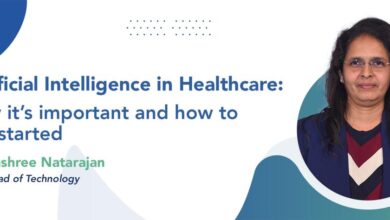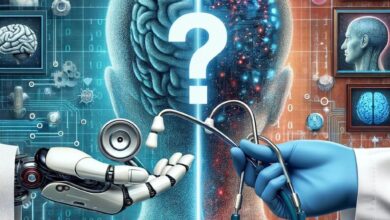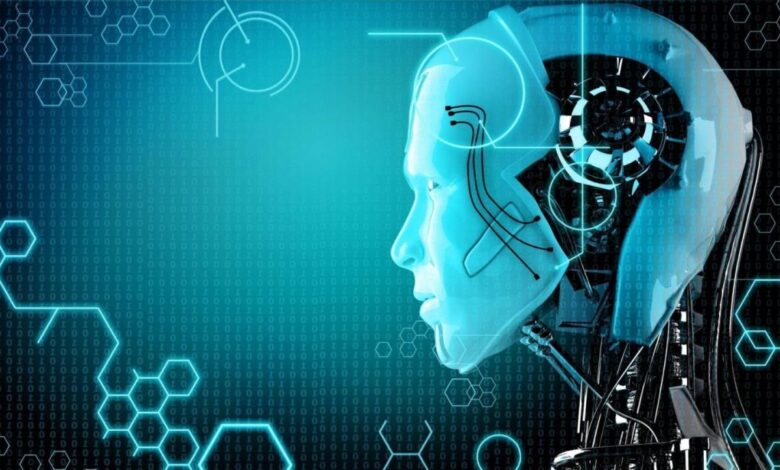
How AI Helps Healthcare Achieve the Quintuple Aim
How AI helps healthcare organizations achieve the quintuple aim is a game-changer. Imagine a future where diagnoses are faster and more accurate, patients feel truly heard and supported, and healthcare professionals have more time to focus on what matters most: compassionate care. This isn’t science fiction; it’s the reality AI is rapidly building for healthcare systems worldwide. We’ll explore how artificial intelligence is revolutionizing healthcare, impacting everything from patient outcomes to cost efficiency, ultimately improving the overall health and well-being of communities.
From AI-powered diagnostic tools that speed up detection and increase accuracy, to personalized medicine that tailors treatments to individual needs, the potential benefits are vast. AI is also streamlining administrative tasks, freeing up valuable time for doctors and nurses, and even predicting patient risks, allowing for proactive interventions. This isn’t just about technology; it’s about creating a more efficient, effective, and ultimately more human-centered healthcare system.
Improved Patient Outcomes
AI is revolutionizing healthcare, significantly impacting patient outcomes through faster, more accurate diagnoses, personalized treatments, and proactive risk management. The integration of artificial intelligence is no longer a futuristic concept but a tangible reality improving the lives of patients and streamlining healthcare processes.AI-powered diagnostic tools offer substantial improvements over traditional methods.
Enhanced Diagnostic Accuracy and Speed
AI algorithms analyze medical images (X-rays, CT scans, MRIs) with remarkable speed and accuracy, often exceeding human capabilities. For instance, AI can detect subtle anomalies in mammograms that might be missed by a radiologist, leading to earlier detection of breast cancer and improved survival rates. The speed at which AI can process these images also reduces diagnostic delays, allowing for timelier interventions.
This translates to better patient outcomes, as early diagnosis and treatment are crucial in many medical conditions. The speed increase alone can mean the difference between catching a disease early and dealing with a much more advanced and potentially life-threatening case.
Personalized Medicine and Treatment Effectiveness
AI is driving the development of personalized medicine, tailoring treatments to individual patients based on their genetic makeup, lifestyle, and medical history. By analyzing vast datasets of patient information, AI algorithms can identify optimal treatment strategies for specific individuals, increasing the effectiveness of therapies and reducing adverse effects. For example, AI can predict which patients are most likely to respond to a particular drug, allowing doctors to avoid prescribing ineffective or potentially harmful medications.
This targeted approach leads to improved patient recovery times and better overall health outcomes. Imagine a scenario where cancer treatment is tailored to a specific patient’s genetic profile, leading to a higher success rate and fewer side effects. That is the power of AI in personalized medicine.
Proactive Risk Prediction and Intervention
AI algorithms can analyze patient data to identify individuals at high risk of developing specific diseases or experiencing adverse events. This predictive capability allows healthcare providers to implement proactive interventions, such as lifestyle modifications or preventative screenings, to mitigate risks and improve overall health outcomes. For example, an AI system might predict which patients are at high risk of developing heart failure based on their medical history and lifestyle factors, allowing doctors to initiate preventative measures, like medication or lifestyle changes, to reduce their risk.
This proactive approach is a paradigm shift in healthcare, moving from reactive to preventative care.
Comparison of Traditional and AI-Assisted Diagnostic Methods
| Method | Speed | Accuracy | Cost-Effectiveness |
|---|---|---|---|
| Traditional (e.g., manual image analysis) | Slow | Moderate | High (labor-intensive) |
| AI-Assisted | Fast | High | Potentially Lower (automation reduces labor costs) |
Enhanced Patient Experience

Source: craiyon.com
AI is revolutionizing healthcare, and a significant benefit is the dramatically improved patient experience. By automating tasks, providing readily accessible information, and personalizing interactions, AI empowers healthcare organizations to deliver more efficient, convenient, and satisfying care. This leads to increased patient engagement and better health outcomes.AI-powered tools are transforming how patients interact with healthcare systems, leading to a more positive and efficient experience.
This improvement stems from several key applications of artificial intelligence.
AI Chatbots and Virtual Assistants Improve Patient Access
AI-powered chatbots and virtual assistants are changing the way patients access information and support. These tools offer 24/7 availability, answering frequently asked questions about appointments, billing, medication, and general health concerns. They can provide personalized advice based on a patient’s medical history and preferences, offering a level of convenience and immediate support that traditional methods can’t match. For example, a chatbot could guide a patient through the process of refilling a prescription, providing step-by-step instructions and answering any questions the patient might have.
This reduces the burden on human staff, allowing them to focus on more complex issues, while simultaneously improving patient satisfaction through quick and easy access to information.
AI Streamlines Appointment Scheduling and Reduces Wait Times
AI algorithms can optimize appointment scheduling, minimizing wait times for patients. By analyzing patient data, appointment history, and provider availability, AI systems can intelligently schedule appointments to maximize efficiency and reduce delays. This reduces patient frustration and improves overall satisfaction. For instance, an AI-powered scheduling system could identify and fill gaps in a doctor’s schedule, leading to shorter wait times for patients.
It could also proactively send appointment reminders and rescheduling options, reducing no-shows and optimizing resource allocation. This results in a smoother, more efficient process for both patients and healthcare providers.
AI Personalizes Patient Communication and Education
AI facilitates personalized communication and education tailored to individual patient needs and preferences. AI can analyze patient data to identify specific areas where education is needed and then deliver customized information in the preferred format – whether it’s a text message, email, or interactive video. Imagine a scenario where a patient with newly diagnosed diabetes receives personalized educational materials from an AI system.
The system, based on the patient’s age, health literacy level, and cultural background, would create a learning plan that includes videos, interactive quizzes, and personalized reminders to check blood sugar levels. This approach ensures the patient receives the information they need in a way they can easily understand and engage with, fostering better health management and adherence to treatment plans.
AI is revolutionizing healthcare, boosting efficiency and improving patient outcomes – key components of the quintuple aim. To understand how this translates into real-world applications, check out this insightful piece on salesforce healthcare ai sean kennedy , which highlights the power of AI in streamlining processes. Ultimately, by optimizing workflows and enhancing data analysis, AI helps healthcare organizations better achieve the quintuple aim’s goals of improved patient experience, better health outcomes, and reduced costs.
AI Improves Patient Convenience and Accessibility
AI applications are enhancing patient convenience and accessibility to healthcare services in various ways. Telemedicine platforms, powered by AI, allow patients to consult with doctors remotely, eliminating the need for travel and providing access to specialists regardless of location. AI-powered translation tools can break down language barriers, ensuring effective communication between patients and healthcare providers. Furthermore, AI-powered diagnostic tools can improve the speed and accuracy of diagnoses, leading to quicker treatment and better outcomes.
For example, AI-powered image analysis can detect subtle abnormalities in medical scans, enabling earlier detection of diseases like cancer. This improved access and convenience directly translates to a better patient experience, making healthcare more accessible and user-friendly.
Increased Healthcare Team Efficiency
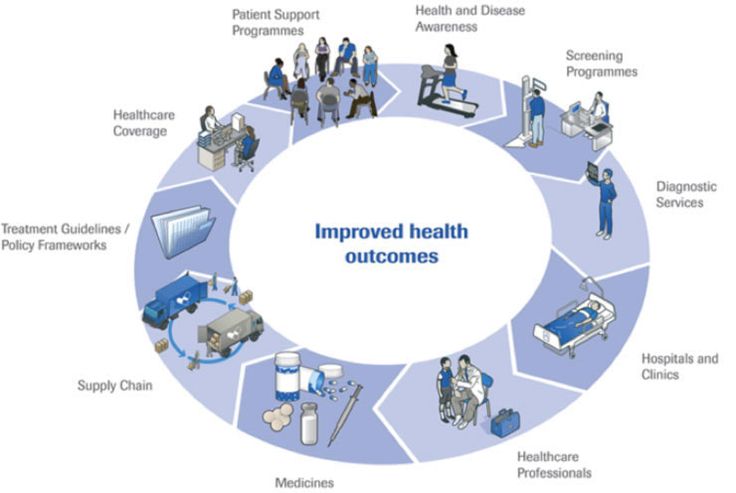
Source: pinimg.com
AI is revolutionizing healthcare, not just by improving patient outcomes and experiences, but also by significantly boosting the efficiency of healthcare teams. This increased efficiency translates to happier, less stressed staff, better resource allocation, and ultimately, improved patient care. By automating mundane tasks and providing powerful analytical tools, AI frees up valuable time for healthcare professionals to focus on what truly matters: their patients.AI’s impact on team efficiency is multifaceted.
It streamlines administrative workflows, enhances clinical decision-making, and optimizes resource allocation, all contributing to a more productive and less burdened healthcare system. Let’s explore these aspects in more detail.
AI’s role in boosting healthcare is huge, helping organizations reach the quintuple aim through improved efficiency and patient outcomes. This is especially relevant considering major healthcare shifts like the recent Jefferson Health Lehigh Valley Health Network merger , where integrating AI could streamline operations and enhance care across the combined system. Ultimately, AI’s potential to improve the patient experience, reduce costs, and boost staff satisfaction makes it a key player in achieving the quintuple aim for merged entities and beyond.
Automation of Administrative Tasks, How ai helps healthcare organizations achieve the quintuple aim
AI-powered tools are rapidly transforming administrative tasks within healthcare. These tools can automate appointment scheduling, insurance verification, medical record retrieval, and billing processes. For example, intelligent chatbots can handle routine patient inquiries, freeing up receptionists to address more complex issues. Automated systems can analyze medical records to identify missing information or potential coding errors, significantly reducing the administrative burden on billing departments.
This automation allows administrative staff to focus on more strategic tasks, improving overall departmental efficiency and reducing the likelihood of human error.
AI Tools Supporting Clinical Decision-Making
AI is proving invaluable in supporting clinical decision-making, leading to more efficient workflows. For example, AI-powered diagnostic tools can analyze medical images (X-rays, CT scans, MRIs) with remarkable speed and accuracy, assisting radiologists in identifying abnormalities and reducing diagnostic delays. Similarly, AI algorithms can predict patient risk factors for various conditions, allowing healthcare providers to proactively intervene and prevent adverse events.
AI is revolutionizing healthcare, boosting efficiency and improving patient outcomes – key to achieving the quintuple aim. News that Kaiser Permanente scrapped a $500 million Seattle bed tower, as reported in this article , highlights the need for innovative cost-saving strategies. Perhaps AI-driven predictive analytics could help optimize resource allocation, allowing organizations to achieve the quintuple aim without massive capital investments.
These tools don’t replace clinicians; rather, they augment their expertise, enabling faster, more informed decisions. The improved accuracy and speed of diagnosis translate directly into improved patient outcomes and more efficient use of healthcare resources.
Optimizing Resource Allocation and Reducing Operational Costs
AI can play a critical role in optimizing resource allocation and reducing operational costs. Predictive analytics, for instance, can forecast patient demand, allowing hospitals to efficiently staff units and allocate beds. AI-powered inventory management systems can optimize the ordering and stocking of medical supplies, reducing waste and storage costs. By identifying inefficiencies and predicting resource needs, AI helps healthcare organizations make data-driven decisions, leading to significant cost savings and improved operational efficiency.
For example, a hospital using AI to predict patient flow might reduce overtime costs by better anticipating staffing needs during peak periods.
AI-Powered Tools Across Healthcare Departments
The applications of AI for improving efficiency span numerous healthcare departments. Here’s a brief overview:
- Radiology: AI-powered image analysis tools for faster and more accurate diagnosis of various conditions.
- Oncology: AI algorithms for personalized cancer treatment planning and prediction of treatment response.
- Cardiology: AI systems for analyzing ECGs and identifying potential cardiac events.
- Administration: AI-powered chatbots for patient communication, appointment scheduling, and billing.
- Pharmacy: AI for medication reconciliation and identification of potential drug interactions.
Reduced Healthcare Costs
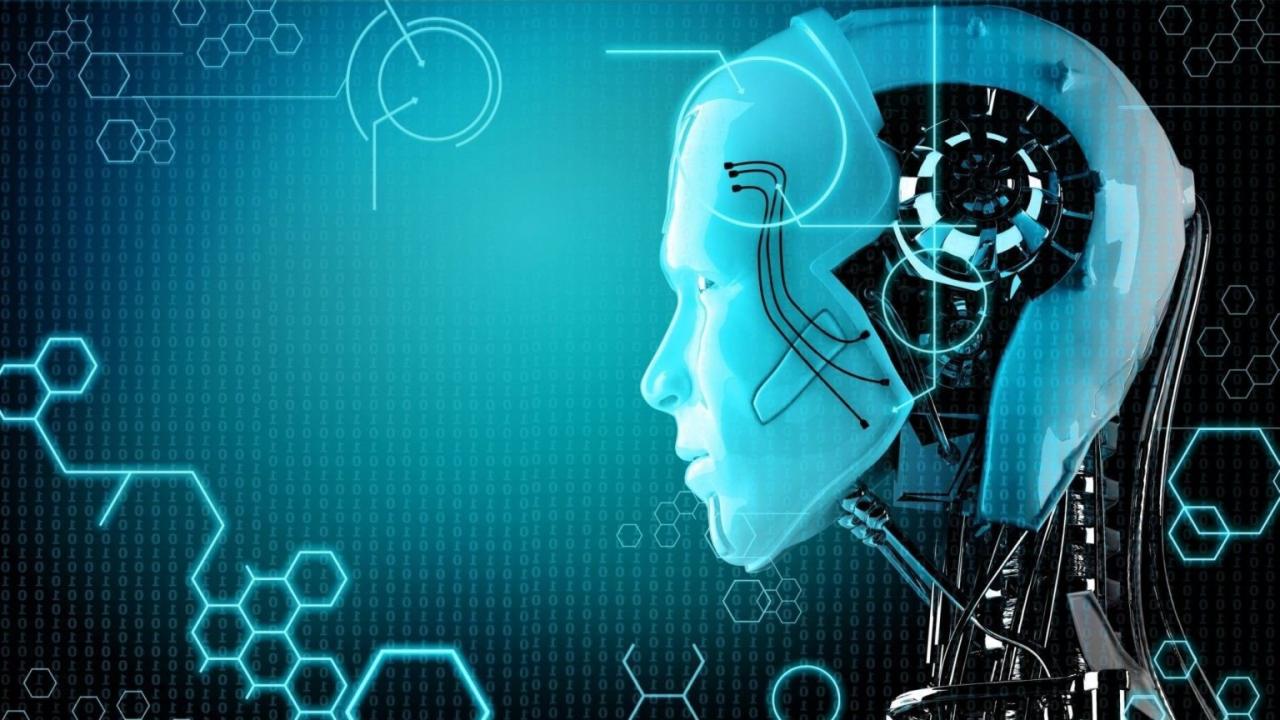
Source: com.my
AI’s integration into healthcare offers a powerful pathway to significantly reduce costs, moving beyond simply improving efficiency to actively lowering overall expenditure. This is achieved through proactive interventions and intelligent resource allocation, ultimately leading to a more sustainable and affordable healthcare system.
The potential for cost reduction through AI is multifaceted. By focusing on preventative care, optimizing resource utilization, and improving the accuracy and speed of diagnoses, AI technologies contribute to a healthier population and a more financially sound healthcare landscape.
AI’s Contribution to Preventative Care
AI-powered tools can analyze patient data to identify individuals at high risk of developing specific conditions, enabling proactive interventions. For example, an AI system might analyze electronic health records (EHRs) and lifestyle data to predict the likelihood of a patient developing type 2 diabetes. Early identification allows for lifestyle modifications, preventative medications, or other interventions, potentially preventing the onset of the disease and the substantial costs associated with its treatment.
This proactive approach shifts the focus from expensive reactive care to cost-effective preventative measures. The long-term savings from preventing chronic diseases are substantial, outweighing the initial investment in AI technology.
AI-Driven Predictive Analytics for High-Risk Patient Management
Predictive analytics, a key strength of AI, allows for the identification and management of high-risk patients, significantly reducing hospital readmissions. By analyzing a patient’s medical history, current health status, and social determinants of health, AI algorithms can predict the likelihood of readmission within a specific timeframe. This allows healthcare providers to proactively intervene, such as implementing tailored discharge plans, arranging follow-up appointments, or providing remote monitoring.
Reducing readmissions translates directly into lower healthcare costs, as readmissions are often associated with significant expenses related to hospitalization, testing, and treatment. For instance, a hospital system using AI to predict readmissions might see a 15-20% reduction, saving millions of dollars annually.
Cost-Effectiveness of AI-Based Solutions
| Task | AI-Based Solution | Traditional Method | Cost Comparison |
|---|---|---|---|
| Image Analysis (e.g., radiology) | AI-powered image analysis software; faster, more accurate diagnosis, reduced need for specialist review. | Manual review by radiologists; time-consuming, potential for human error. | AI reduces costs through increased efficiency and reduced labor costs, potentially leading to significant savings over time. Studies have shown cost reductions ranging from 20-40%. |
| Drug Discovery | AI algorithms accelerate drug discovery by identifying potential drug candidates and predicting their efficacy; reduces time and cost associated with traditional trial-and-error methods. | Traditional methods involving extensive laboratory research and clinical trials; lengthy and expensive process. | AI significantly reduces the time and cost associated with drug development. While initial investment is high, the potential for faster time to market and reduced failure rates translates to substantial long-term cost savings. |
Cost Savings Achieved Through AI in Healthcare
Numerous healthcare organizations have reported substantial cost savings through the implementation of AI solutions. For example, some hospitals have seen a 20% reduction in length of stay for certain patient populations, leading to significant savings in hospital bed costs and associated expenses. Others have achieved double-digit reductions in readmission rates, translating into millions of dollars saved annually. The specific cost savings vary widely depending on the AI application, the size and type of healthcare organization, and the specific implementation strategy.
However, the overall trend points towards substantial cost reduction potential through the strategic integration of AI.
Improved Population Health
AI is revolutionizing how we understand and manage population health. By analyzing massive datasets, AI can uncover hidden patterns and predict future health trends with unprecedented accuracy, leading to more effective and proactive public health interventions. This allows healthcare organizations to move beyond reactive care and focus on preventative strategies, ultimately improving the overall health of entire communities.AI’s ability to process and analyze vast quantities of data, including electronic health records, insurance claims, social determinants of health data, and even social media trends, provides a holistic view of population health.
This surpasses the capabilities of traditional methods, which often rely on smaller, less representative samples.
AI-Driven Analysis of Population Health Trends and Risk Factors
AI algorithms, particularly machine learning models, excel at identifying correlations and patterns within large datasets that might be missed by human analysts. For example, by analyzing patient records combined with socioeconomic data, AI can pinpoint specific geographic areas with high rates of diabetes or heart disease. This allows for targeted resource allocation and the development of tailored prevention programs for those communities.
Predictive modeling can even identify individuals at high risk of developing certain conditions, enabling early intervention and potentially preventing serious health problems. A recent study by the CDC, for example, used AI to predict flu outbreaks more accurately than traditional methods, allowing for more timely allocation of vaccines and resources.
AI Support for Disease Surveillance and Outbreak Prediction
Real-time disease surveillance is significantly enhanced by AI. AI algorithms can analyze data from various sources, including electronic health records, social media posts reporting symptoms, and even search engine queries, to detect unusual patterns that might indicate an emerging disease outbreak. This early warning system allows public health officials to respond swiftly, implementing containment measures and mitigating the impact of outbreaks.
For instance, during the COVID-19 pandemic, AI models were used to predict the spread of the virus, helping to inform public health policies and resource allocation.
AI in Developing Targeted Interventions and Public Health Campaigns
Once risk factors and trends are identified, AI helps develop tailored interventions and public health campaigns. By analyzing demographic data and individual health profiles, AI can personalize messages and recommendations, increasing the effectiveness of health promotion efforts. For example, AI-powered chatbots can provide individuals with personalized advice on diet and exercise based on their health status and preferences.
Similarly, AI can optimize the design and targeting of public health campaigns, ensuring that resources are allocated to the communities that need them most.
Visual Representation of AI’s Role in Population Health Monitoring
Imagine a dynamic dashboard displaying a geographical map of a region. Different colors represent varying levels of risk for a specific disease, say, cardiovascular disease. Darker shades indicate higher risk areas, identified by AI analysis of socioeconomic factors, environmental data, and health records. Overlaid on this map are data points representing individual risk scores, calculated by AI models based on patient data.
The dashboard also includes charts showing trends over time, such as the incidence rate of the disease and the effectiveness of interventions in different areas. This visual representation allows public health officials to quickly identify high-risk populations, track the effectiveness of interventions, and allocate resources efficiently. The dashboard would also show predicted future trends, based on AI models, allowing for proactive planning and resource allocation.
This visual tool enables data-driven decision-making, leading to more effective and efficient population health management.
Closing Notes
The integration of AI in healthcare is not just a technological advancement; it’s a fundamental shift towards a more patient-centric, efficient, and cost-effective system. By tackling the quintuple aim – improved patient outcomes, enhanced patient experience, increased healthcare team efficiency, reduced healthcare costs, and improved population health – AI offers a powerful pathway to a healthier future for all.
The journey is ongoing, but the potential is undeniably transformative. The future of healthcare is intelligent, and it’s here.
User Queries: How Ai Helps Healthcare Organizations Achieve The Quintuple Aim
What are the ethical considerations of using AI in healthcare?
Ethical concerns include data privacy, algorithmic bias, and the potential displacement of healthcare workers. Careful consideration of these issues is crucial for responsible AI implementation.
How secure is patient data when using AI in healthcare?
Data security is paramount. Robust security measures, including encryption and access controls, are essential to protect sensitive patient information. Compliance with regulations like HIPAA is also vital.
What is the return on investment (ROI) for AI in healthcare?
ROI varies depending on the specific application. While initial investment can be significant, the long-term benefits – reduced costs, improved efficiency, and better outcomes – can lead to substantial returns.
How can healthcare organizations get started with AI implementation?
Start with a clear strategy, identifying specific areas where AI can provide the greatest impact. Partner with experienced AI vendors and prioritize data quality and security.
